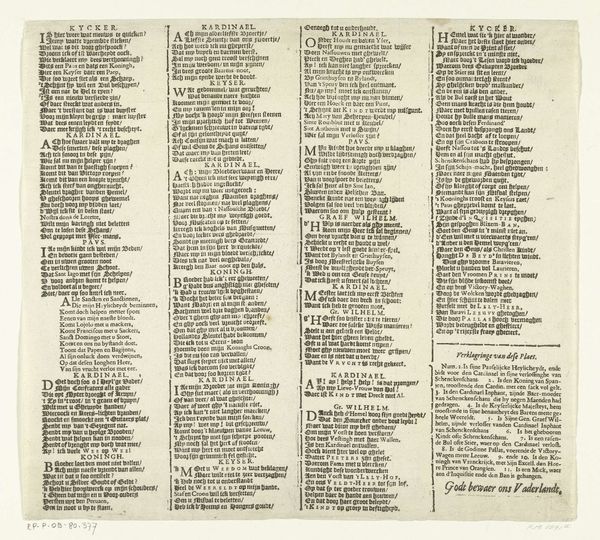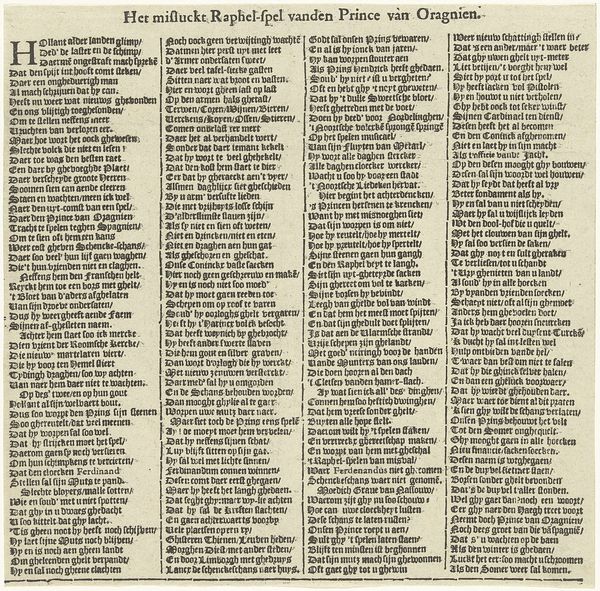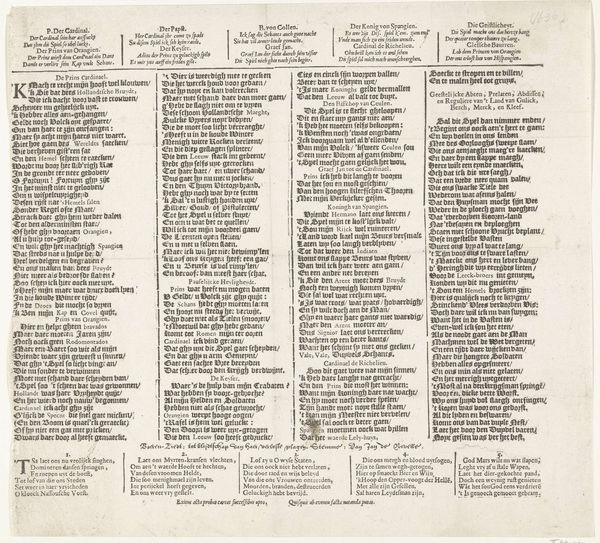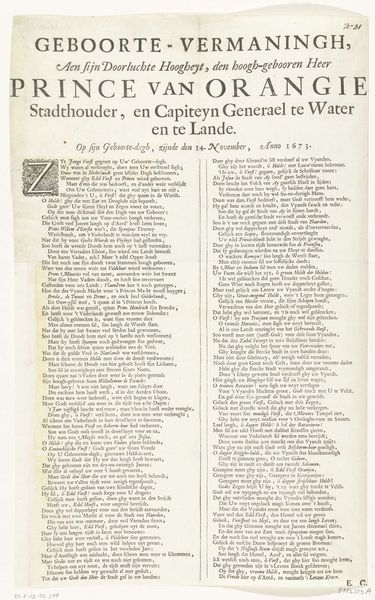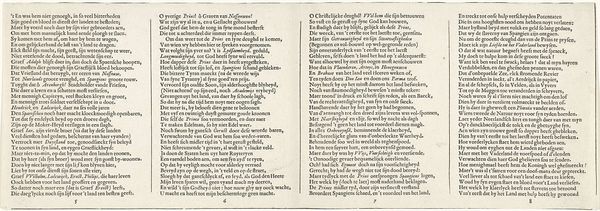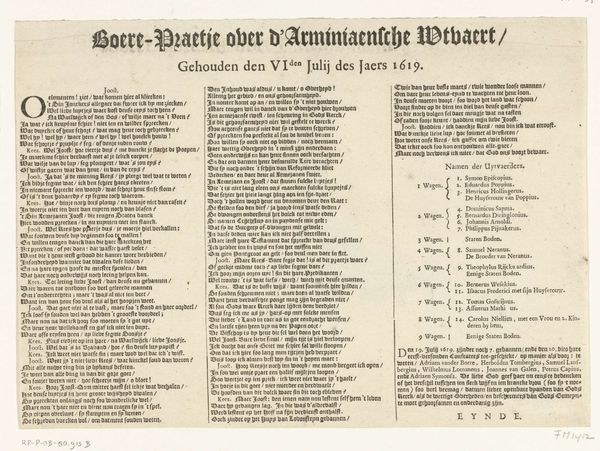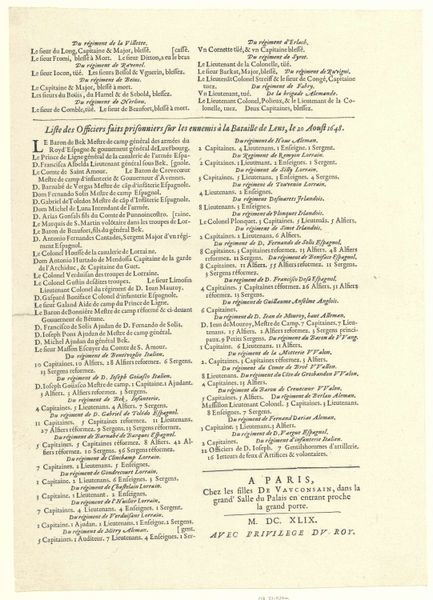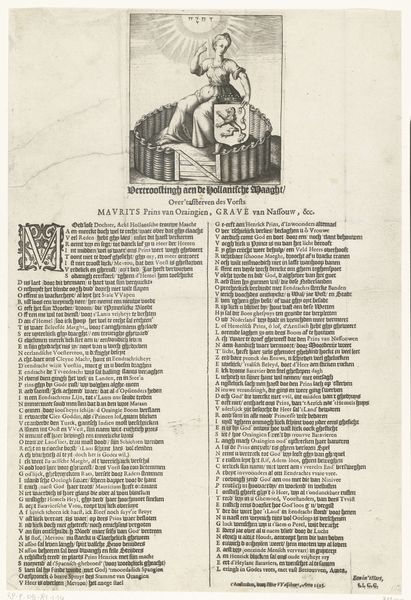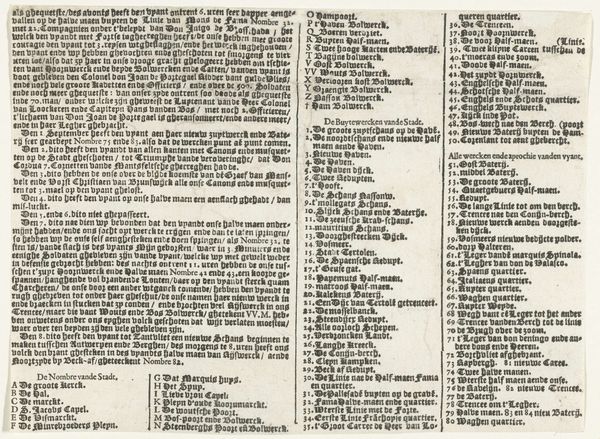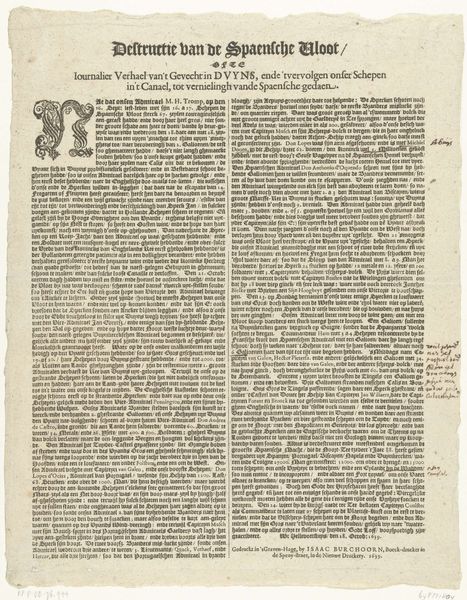
graphic-art, print, textile
#
graphic-art
#
baroque
#
dutch-golden-age
# print
#
textile
Dimensions: height 345 mm, width 450 mm
Copyright: Rijks Museum: Open Domain
This broadside, made in 1678 by D. van der Ley, celebrates the Peace of Nijmegen through symbolic verse. Dominating the scene is the image of the Holland Maid, a personification of the Dutch Republic, encircled by a laurel wreath, symbolizing victory and honor. The verses surrounding this central image allude to themes of divine protection and national pride. The Holland Maid as a national symbol can be traced back to classical antiquity, echoing figures like the Roman goddess Roma, who represented the Roman state. This motif embodies collective identity and national spirit, much like Marianne in France or Britannia in the UK. The wreath is particularly fascinating. From ancient Greece to the Renaissance, wreaths have signified triumph, virtue, and cyclical renewal. The cyclical nature is key: just as the seasons turn, so too do periods of conflict and peace. This symbol engages our subconscious, reminding us of the eternal rhythm of history. Thus, the broadside presents a powerful image with deep historical roots, resurfacing in 17th-century Dutch culture, and evolving to embody new political and national meanings.
Comments
No comments
Be the first to comment and join the conversation on the ultimate creative platform.
